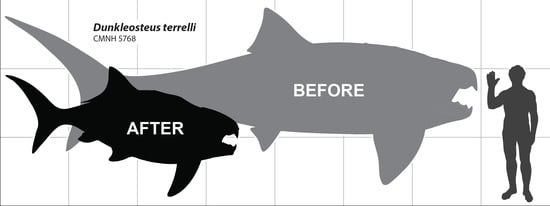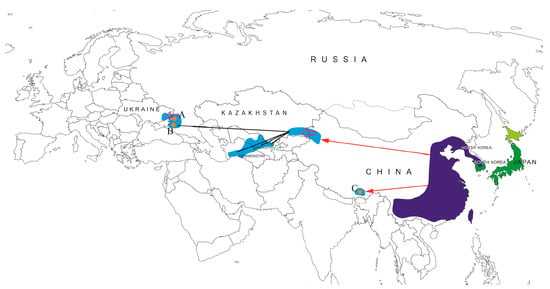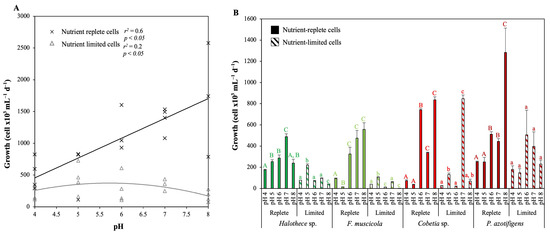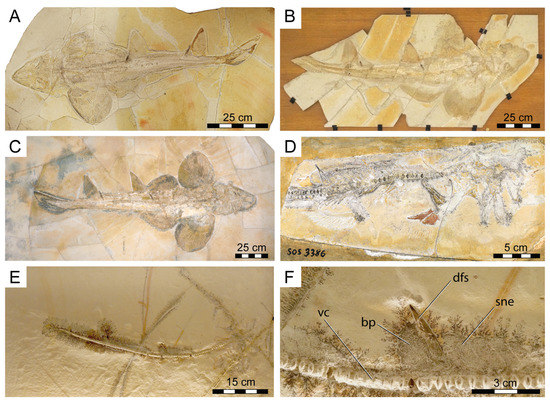Diversity 2023, 15(3), 318; https://doi.org/10.3390/d15030318 - 21 Feb 2023
Cited by 12 | Viewed by 66978
Abstract
Dunkleosteus terrelli, an arthrodire placoderm, is one of the most widely recognized fossil vertebrates due to its large size and status as one of the earliest vertebrate apex predators. However, the exact size of this taxon is unclear due to its head
[...] Read more.
Dunkleosteus terrelli, an arthrodire placoderm, is one of the most widely recognized fossil vertebrates due to its large size and status as one of the earliest vertebrate apex predators. However, the exact size of this taxon is unclear due to its head and thoracic armor being the only elements of its body regularly preserved in the fossil record. Lengths of 5–10 m are commonly cited, but these estimates are not based on rigorous statistical analysis. Here, I estimate the body size of D. terrelli using a new metric, orbit-opercular length, and a large dataset of arthrodires and extant fishes (3169 observations, 972 species). Orbit-opercular length strongly correlates with total length in fishes (r2 = 0.947, PEcf = 17.55%), and accurately predicts body size in arthrodires known from complete remains. Applying this method to Dunkleosteus terrelli results in much smaller sizes than previous studies: 3.4 m for typical adults (CMNH 5768) with the largest known individuals (CMNH 5936) reaching ~4.1 m. Arthrodires have a short, deep, and cylindrical body plan, distinctly different from either actinopterygians or elasmobranchs. Large arthrodires (Dunkleosteus, Titanichthys) were much smaller than previously thought and vertebrates likely did not reach sizes of 5 m or greater until the Carboniferous.
Full article
(This article belongs to the Special Issue Paleoecology, Diversity, Taphonomy, Phylogeny, and Evolution of Paleozoic Fishes)
►
Show Figures









